Cyclamen are a beautiful small growing flowering plant , usually grown in pots. They flower in mid to late winter to spring and the flowers come in a large variety of colours. The leaves are also very attractive with their two-tone marbled effect. Cyclamen don't like hot stuffy rooms, so take them outside at night during winter when your house is heated. I have found that the best way to water them is to give them some ice cubes everyday. They are quite simple to take care of, but make sure you remove the old dead leaves. Some people plant their old Cyclamen plants outside in a semi-shaded spot , and with some tender loving care and fertilizer, you can get a second years flowering out of them. The Cyclamen in the photo were at a Sydney Garden Centre.
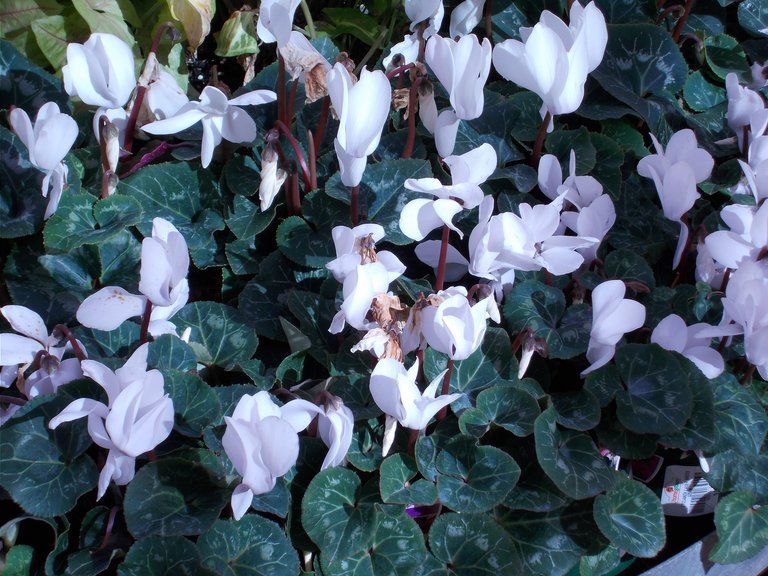
A wonderful plant, my companion and Cyclamens love light, however the best place for their abode is the eastern and western windows. In the event that the plant is situated on the south side, it is essential to shield it from coordinate daylight. The room where cyclamen develops ought to be frequently ventilated.
The temperature administration assumes an imperative part for the effective development of cyclamens. The best temperature exposed to the harsh elements season is 10-12 ° C. A higher figure will make it begin to dispose of the leaves and stop to sprout. In the event that the plant was developed in a nursery, it is important to make fitting conditions in the flat. At home, it isn't generally conceivable to keep cyclamen in the cool. Cyclamen is a plant that cherishes high dampness. Amid the development of the leaves, they should be showered. When the cyclamen begins to blossom, such control isn't essential. To expand the mugginess, you can make a water fog close to the plant.
Visit watering is favored, however the measure of water ought to be direct. Its temperature can be a few degrees beneath room temperature. Prior to the presence of bloom stalks over the leaves of the cyclamen, you can water it specifically into the pot, at that point you have to empty the water into the dish and deplete its overabundance.
To expand the sprout of cyclamen will encourage preparation, including helpful mineral segments. To bolster a plant it is fundamental 1 time in 2 weeks.
It is important to make air circulation of the root arrangement of the cyclamen. It is attractive to utilize an air penetrable substrate from coarse-grained peat. For the blend it is important to join in parallel amounts leaf arrive, humus, peat and sand. Much obliged to you @ctrl-alt-nwo
https://rastenievod.com/tsiklamen.html
Fav. comment Award !! Great choice of Pics and info. Well done.
That is a amazing garden & really looks for flowers. the great cyclamen for Indoor colour
Thanks for the information.
100% upvote Resteem
Silly Sausage Award !! Great comment with nice pics .
A delightful tuberous perennial providing color often when little else is flowering, particularly in late winter or early spring. Hardy cyclamen species and cultivars are ideal for naturalizing under trees, on banks or in a shady border and planted in association with other early-flowering woodland plants such as snowdrops, winter aconites, and primroses.
Collect seed of most cyclamen species when the flower-stalk coils, drawing the seed capsule closer to the soil surface to release the ripe seed. Best sown fresh, seeds should be sown immediately after soaking overnight, in a mix of equal parts seed compost and sharp grit. Cover seeds carefully with a thin layer of sieved compost as light can inhibit germination.
Cover the container in a clear plastic bag and keep at a minimum temperature of 16°C (60°F) in light shade until large enough to transplant.
This excellent garden plant will provide ground cover from winter to spring.
Large flowers in shades of pink appear before the leaves in early autumn. Marbled foliage bears a resemblance to that of ivy. This species self-seeds freely.
Very fragrant pink flowers borne with the heart-shaped, shiny, dark green and silvery mottled leaves, flowers from mid-late summer.
Source
Hardy cyclamen can survive brief and sometimes prolonged periods at temperatures below 0 degrees especially with snow cover. It is difficult to know how well they will grow in zones as low as 4 though growers have had success. It may depend on finding a favorable micro climate in colder winter areas. Weather buffers of trees, shrubs, buildings, amount of moisture, sun, etc. can make a difference in successfully growing cyclamen in severe cold. It is good to keep in mind that winter is their growing season when they need light and moisture. My opinion is some may survive three months of snow cover but they are not likely to thrive. As a general rule they will grow best in areas where average winter temperatures are above the freezing mark.
Hardy Cyclamen are ideally suited to growing in a shaded rockery or naturalized in the light shade of woodland borders. Here they combine with ferns, hardy perennials, and spring flowering bulbs of Scilla, Erythroniums, and Fritillaries. Planted in beds of their own they will create a colony of amazing color. Hardy cyclamen are one of the few flowering plants that will grow in the dry shade, one of the most challenging spots in any garden. Cyclamen roots are noncompetitive and can be planted among the roots of trees and large shrubs, both deciduous and evergreen.
https://hardycyclamens.secure.guardedhost.com/grow-hardy-cyclamen-outdoors.html
Here at Gertens, we offer indoor care instructions for cyclamen plants, one of the best winter bloomers. Over the years, growers have come up with many new hybrids for us to enjoy. Some have ruffled flowers, and some varieties are miniature, but all maintain a large bright flower, usually in red, pinks, maroons and white. All Cyclamen display green or variegated heart shaped leaves.
Easy to use soil moisture and light meters can help you ensure your Cyclamen and other houseplants receive the proper water and light. Mini-floral snips are handy for trimming and shaping.
Cyclamen are a great indoor plant - easy 8 weeks plus of color.
One of the reasons our Cyclamen last as long as they do is that we build up the base of the plant first. Proper variety selection, culture and nutrition will allow the plant to grow a lot of leaves - and with Cyclamen, leaves = flowers. If you gently push apart the leaves on one of our Cyclamen you will see lots of buds coming up from the center. You can also move a Cyclamen outside in April - the plant will take a freeze, but you should be careful to acclimate the plant so the change isn't too great, both from a temperature and sunlight perspective.
https://www.gertens.com/learn/Annuals-Perennials/cyclamen.htm
The cyclamen plant is a lovely perennial tuber from the Primulacaea family, native to Mediterranean countries such as the Greek Islands, Turkey and some parts in Europe.The name “Cyclamen” comes from Greek origins- Kylos, or “ring” which explains how the seeds twist and turn as they grow.A Cyclamen’s leaves are dark green, shaped like a heart, and its surface usually bears a striking pattern marked in a lighter green or white shade. The flowers are upswept and come in a variety of pastel hues.
Naturally, the Cyclamen blooms from January till March when the air is colder, then rests during the warmer summer months.Cyclamen plants are a favorite for use as an indoor flowering houseplant, and it’s because of a number of things.One, the variety of bright-colored flowers are astounding – you can see multicolored ones, pure whites or in any shade of red.Today’s cyclamen persicum hybrids are the most sought-after variety of the Cyclamen tuber. There are also different sizes to choose from; the miniature cyclamen varieties come in a number of bright shades, and they can bloom as much as the bigger sized varieties!

Source: https://plantcaretoday.com/cyclamen-plant-care.html
Cyclamen are perennial plants, and will go dormant in spring. Most people just toss them at that point, but if you're patient, they will come back. After the flowers drop, the leaves will drop, too. At that point, it doesn't much matter where you store it, but cut back watering to almost nothing. You can put it outside over the summer. The plant can't use water while it's dormant, but becoming 100% dry makes the soil harder to work with in the future. If you have it outside, it will naturally respond to the falling temperature in autumn and sprout new growth. That's when you can bring it back inside, give it a thorough soak, and return to normal care.
Too bad I didn't get any award this time @ctrl-alt-nwo
I think the leaves of this plant are more attractive than flowers of it! Pretty cool photography and description, never see this flower and the plant before!@ctrl-alt-nwo,
Cheers~
Hello sir , this is the first time i visited your blog and also seen your previous post that really wonderful. I like nature and flower , got lots of amazing unknown flower that really so beautiful and attractive too. Thanks to share, followed and upvoted your post.
Cyclamen are a bit fussy about watering. It's best to let the soil get somewhat dry between waterings, but not to the point of wilting. When the pot feels light or the soil feels dry just below the surface, water it thoroughly and let it drain. Pour out any water left in the saucer so that the soil doesn't stay soggy. Fertilize with regular houseplant fertilizer for flowering plants.
To keep plants blooming, remove flowers as they finish by cutting the stems near the base of the plant. Sometimes the petals will fall off and leave a round seed capsule that resembles a flower bud. Remove these, too. True cyclamen flower buds are long and pointed. Also remove yellow and withered leaves.
In the spring, let the soil dry out and keep the pot in a cool dry place for the summer. The plants will look dead, but as long as the tubers remain hard and plump, they are only resting. Begin watering in the early fall and put it back into a cool, bright window for another season of bloom.
Source, net.
Cyclamen is a genus of 23 species of perennial flowering plants in the family Primulaceae. Cyclamen species are native to Europe and the Mediterranean Basin east to Iran, with one species in Somalia. They grow from tubers and are valued for their flowers with upswept petals and variably patterned leaves.

Source
It was traditionally classified in the family Primulaceae, was reclassified in the family Myrsinaceae in 2000,[4] and finally, in 2009 with the introduction of the APG III system, was returned to the subfamily Myrsinoideae within the family Primulaceae.
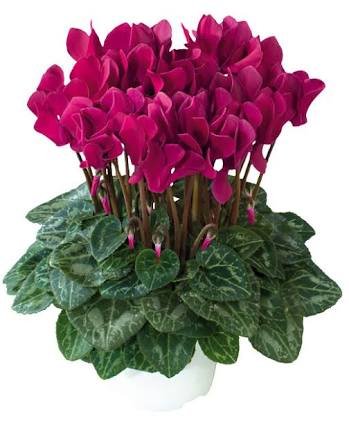.jpeg)
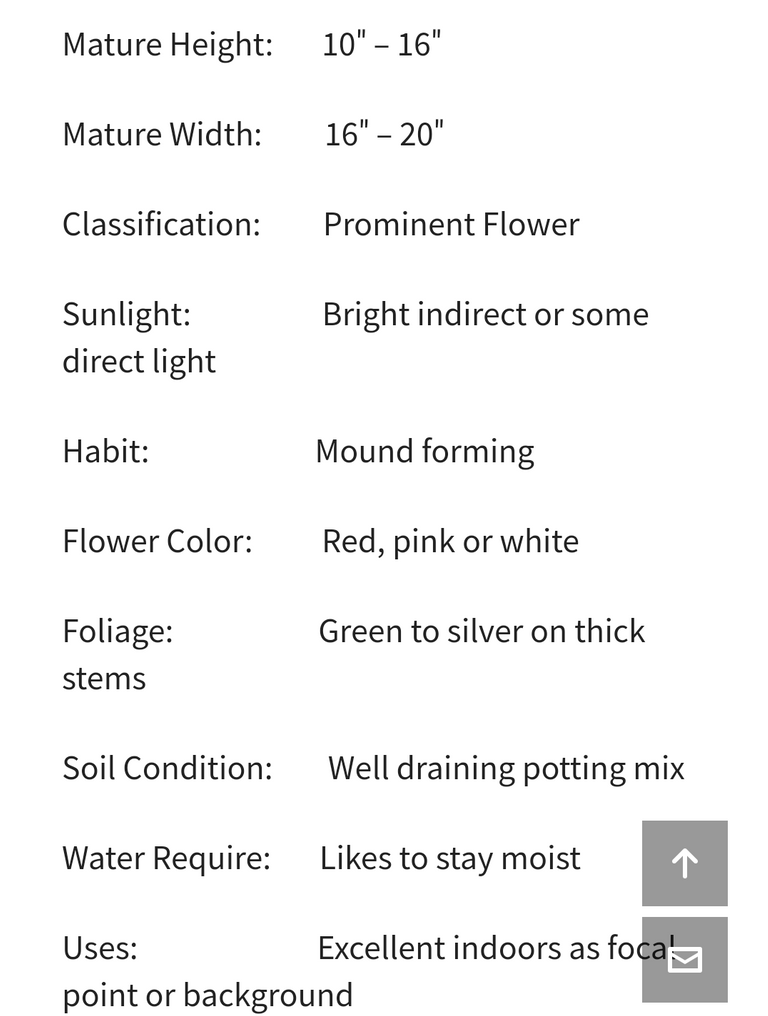
Source
Light Requirement of Cyclamen:
Indoors, these does best with bright indirect to bright direct light. An Eastern exposure is ideal, a western window with a curtain works as long as the plant does not receive too much direct light.
.jpeg)
Watering Cyclamen:
These plants like a happy medium between too dry and too wet; they like to stay evenly moist. These bulbs have a tendency to rot if kept too wet and will lose their foliage if kept too dry.
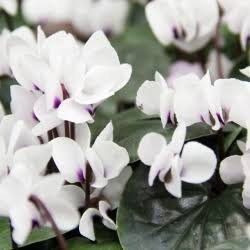.jpeg)
History and introduction of Cyclamen:
Native to Europe, Cyclamen belong to the family Primulaceae. Cyclamen are often gifted to loved ones because they are symbolic of affection, appreciation and love. In Europe, these plants grow as a groundcover along the forest floor.
Cyclamen prefer day temperatures to be at or below 68, and night temperatures of 50. These temperatures keep them flowering and looking beautiful for the longest period of time. As they are bulbs, they need a natural dormancy period. After a few months, the flowers and foliage die off, and energy is stored in the below ground tuber. Let the plant and soil dry out completely, and leave it in a cool, dark place. After a few months, thoroughly wet the soil and help the tubers break dormancy. Soon, foliage and then flowers will emerge from the tuber. The tuber will have to be transplanted into a larger container once the roots have filled its current container.
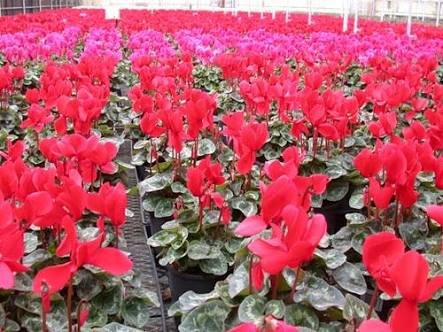.jpeg)
The wild species from which florists’ cyclamen are derived is Cyclamen persicum. Many spring visitors to the Mediterranean islands of Cyprus, Rhodes and (Eastern) Crete are likely to have seen it in flower there but it grows also (together with a few other places) on the islands and coastal areas of the Eastern Aegean and around the North Eastern corner of the Mediterranean from southern Turkey to northern Israel. It can grow in great drifts of thousands of plants, the commonest flower around, and fill the air with a sweet scent. However, Cyclamen persicum is only one of around 23 species, some of them frost hardy, one or another of which can be in flower from late summer until late spring..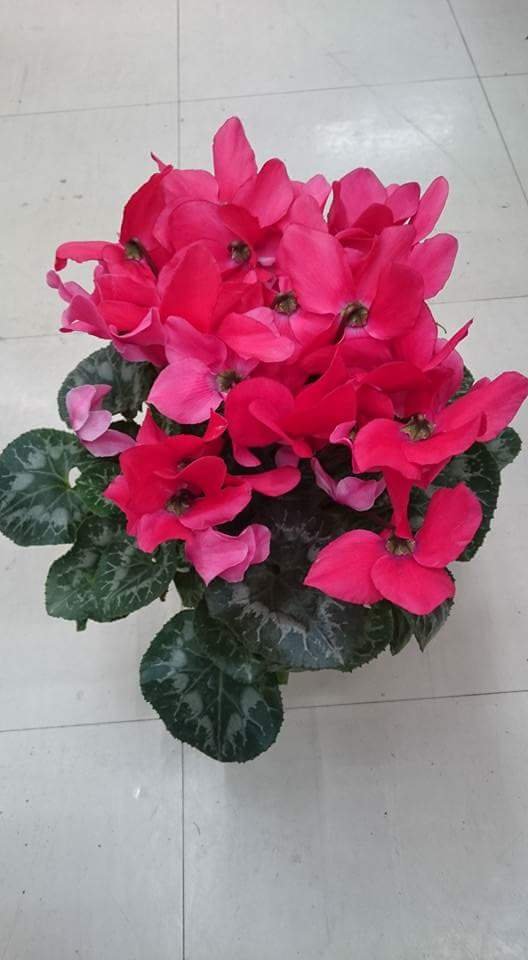 Florists’ cyclamen
Florists’ cyclamen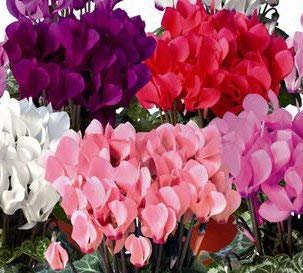 Florists’ cyclamen have been bred over more than 150 years. Initially selected for a wider range of colours, based on the white and pink seen in wild Cyclamen persicum and for larger flowers. At the same time different petal shapes arose, flattened (the wild version is twisted), fringed (toothed edge) double and others.
Florists’ cyclamen have been bred over more than 150 years. Initially selected for a wider range of colours, based on the white and pink seen in wild Cyclamen persicum and for larger flowers. At the same time different petal shapes arose, flattened (the wild version is twisted), fringed (toothed edge) double and others. 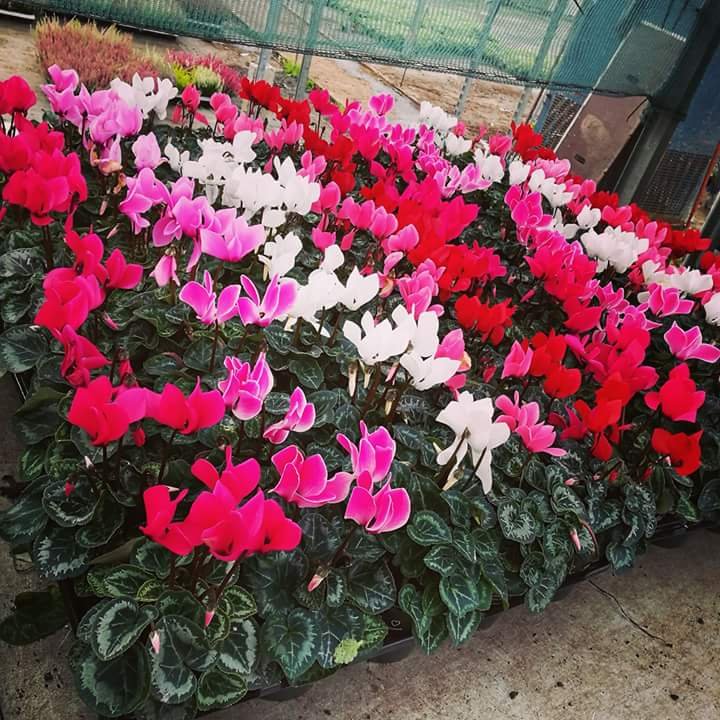 More recently these efforts have extended to re-introducing scent, lost during the development of larger plants, increasing the extent and intensity of leaf patterning and developing more sizes, so they are now available from tiny, through small, medium and large, to giant (Micro, Mini,midi maxi,magnum..
More recently these efforts have extended to re-introducing scent, lost during the development of larger plants, increasing the extent and intensity of leaf patterning and developing more sizes, so they are now available from tiny, through small, medium and large, to giant (Micro, Mini,midi maxi,magnum.. 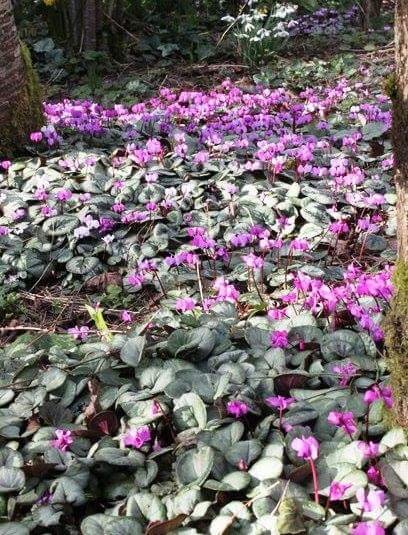 Perhaps you have a cyclamen on the windowsill which is looking a bit tired but it was given to you by someone special or you particularly like it or you forgot to water it and when you remembered the leaves were a bit yellow and didn’t turn green again. Don’t despair! The wild plants are long lived, resting through the long dry Mediterranean summer and growing again once the winter rains start. The houseplants will respond the same way. Water regularly until spring, not too much – more cyclamen die from over watering than ever die of drought, then reduce and leave virtually dry over the summer. Start watering again in early autumn and your plant should grow and flower again.
Perhaps you have a cyclamen on the windowsill which is looking a bit tired but it was given to you by someone special or you particularly like it or you forgot to water it and when you remembered the leaves were a bit yellow and didn’t turn green again. Don’t despair! The wild plants are long lived, resting through the long dry Mediterranean summer and growing again once the winter rains start. The houseplants will respond the same way. Water regularly until spring, not too much – more cyclamen die from over watering than ever die of drought, then reduce and leave virtually dry over the summer. Start watering again in early autumn and your plant should grow and flower again. 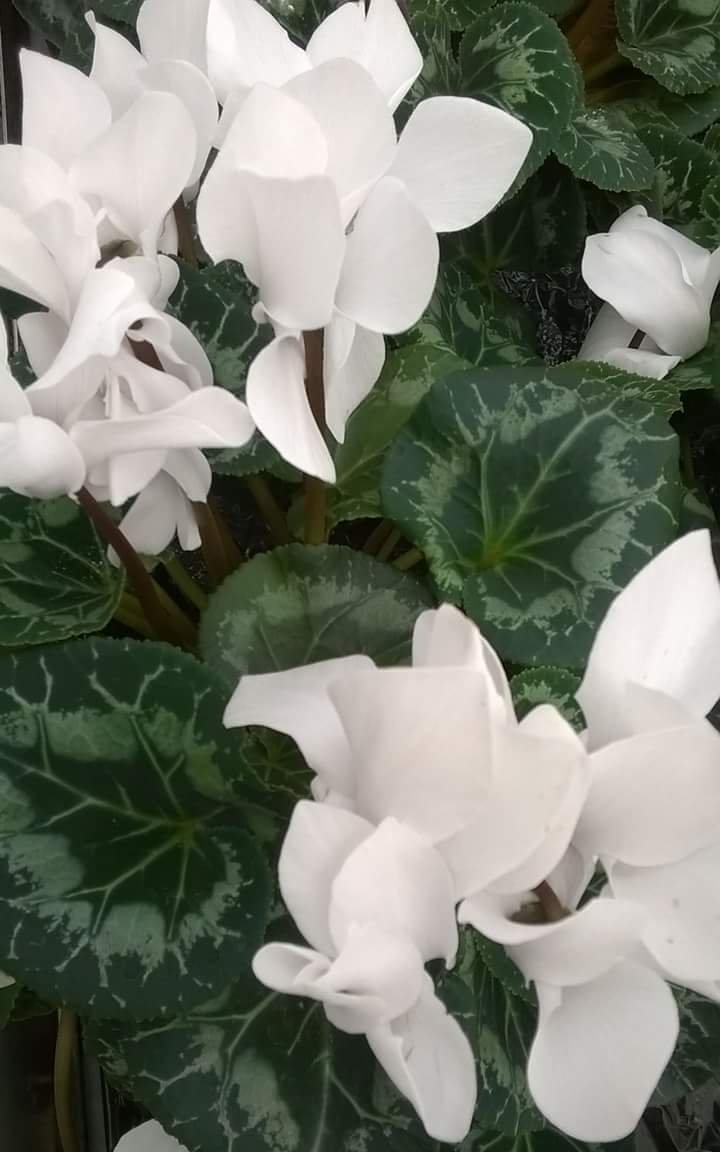 thanks to sharing for your great post of cyclamen plants.. very well done.my dear friend.. @ctrl-alt-nwo
thanks to sharing for your great post of cyclamen plants.. very well done.my dear friend.. @ctrl-alt-nwo
Buying or being given one of these as a present is most people’s first encounter with a cyclamen are cultivars of the wild Cyclamen persicum and are sold in millions all over the world. Coming into flower during the winter in a range of colour shades from white through pink to red they are hugely popular as houseplants around December/January in the northern hemisphere. They are also used as bedding plants, particularly around the Mediterranean, and in window boxes in northern European cities. Unfortunately, they are not completely frost hardy which restricts their use as garden plants in areas with hard winters. Fortunately, species such as Cyclamen coum and Cyclamen hederifolium can be used that.
A beautiful plant, my friend and Cyclamens love light, but the best place for their dwelling is the eastern and western windows. If the plant is located on the south side, it is important to protect it from direct sunlight. The room where cyclamen grows should be regularly ventilated.
The temperature regime plays an important role for the successful cultivation of cyclamens. The best temperature in the cold season is 10-12 ° C. A higher figure will cause it to start to discard the leaves and cease to bloom. If the plant was grown in a greenhouse, it is necessary to create appropriate conditions in the apartment. At home, it is not always possible to keep cyclamen in the cool. Cyclamen is a plant that loves high humidity. During the growth of the leaves, they need to be sprayed. As soon as the cyclamen starts to bloom, such manipulation is not necessary. To increase the humidity, you can create a water mist near the plant.
Frequent watering is preferred, but the amount of water should be moderate. Its temperature can be a couple of degrees below room temperature. Before the appearance of flower stalks over the leaves of the cyclamen, you can water it directly into the pot, then you need to pour the water into the pan and drain its excess.
To extend the bloom of cyclamen will help fertilization, including useful mineral components. To feed a plant it is necessary 1 time in 2 weeks.
It is necessary to create aeration of the root system of the cyclamen. It is desirable to use an air permeable substrate from coarse-grained peat. For the mixture it is necessary to combine in equal quantities leaf land, humus, peat and sand. Thank you @ctrl-alt-nwo
https://rastenievod.com/tsiklamen.html
How To Grow Cyclamen
GIVING and receiving flowering plants at the holidays is a time-honored tradition, but one that's fraught with anxiety. Unlike a box of chocolates or a pair of gloves, a living plant requires care to keep it healthy. Holiday houseplants, such as cyclamen, are particularly worrisome for most folks because their flowering cycle and general care are unfamiliar, even to seasoned gardeners.
Florist's cyclamen (Cyclamen persicum) start showing up in grocery stores and garden centers between Thanksgiving and Christmas. Flowers with swept-back petals resemble shooting stars and their heart-shaped leaves are embroidered with intricate, silvery patterns. In the right conditions, the plants will bloom continuously for a couple of months.
Like many other plants in their native eastern Mediterranean climate, cyclamen naturally bloom in the fall, winter, and spring when the weather turns cool and damp. During the hot, dry summers, cyclamen become dormant; their foliage yellows and dies back and plants show no signs of growth. They store energy for the next flowering season in their round tubers.
The key to keeping cyclamen happy and healthy is to replicate their natural environment as closely as possible. They thrive in cool temperatures that drop as low as 40 degrees F. at night and rise into the 60s during the day. Place them close to a bright south-, east-, or west-facing window for maximum sunlight.
Cyclamen are a bit fussy about watering. It's best to let the soil get somewhat dry between waterings, but not to the point of wilting. When the pot feels light or the soil feels dry just below the surface, water it thoroughly and let it drain. Pour out any water left in the saucer so that the soil doesn't stay soggy. Fertilize with regular houseplant fertilizer for flowering plants.
To keep plants blooming, remove flowers as they finish by cutting the stems near the base of the plant. Sometimes the petals will fall off and leave a round seed capsule that resembles a flower bud. Remove these, too. True cyclamen flower buds are long and pointed. Also remove yellow and withered leaves.
In the spring, let the soil dry out and keep the pot in a cool dry place for the summer. The plants will look dead, but as long as the tubers remain hard and plump, they are only resting. Begin watering in the early fall and put it back into a cool, bright window for another season of bloom.
https://www.gardeners.com/how-to/how-to-grow-cyclamen/7260.html
Oh yeah @ctrl-alt-nwo, it's a beautiful plant and it has a large rounded tuber, towering above the surface of the ground. Leaves are dark green dense. Flowers are large bright or softly-pastel tones.
Lighting
Cyclamen needs bright lighting, but without direct sunlight.
Watering
During the flowering period, the plant should be watered abundantly, but without overmoistening. In the period of rest watering should be significantly reduced, watered just enough so that the soil does not dry out. Water cyclamen should be very careful. Water should not fall on the top of the tuber and shoots.
Fertilizer
Fertilizer is a very important part in caring for cyclamens. This is important for proper development and beautiful flowering. Fertilize once in 2 weeks, you can use any commercially available complex mineral fertilizer, you can use a special fertilizer for flowering plants. During the rest period cyclamen is not fertilized.
Transfer
Cyclamen transplantation is performed in the summer, usually in the second half, when the growth of young leaves begins. Pot for transplantation should not be spacious, between the edge of the pot and the tuber should be no more than 2-3 cm. Drainage is necessary. At the transplantation it is desirable to steal the earth and to process with a pink solution of potassium permanganate, t. cyclamen is easily attacked by pests. Tuber during transplantation can not be deeply buried, above the ground should be left from a third to half of the tuber. The transplant should be done carefully, so as not to damage the roots.
http://myflo.ru/index/cyclamen/0-17
The name cyclamen is derived from the Greek word for coil or circle, because of the way the flower stems curl up to bring its round seedpods under the protective cover of the leaves when the petals.the are mostly known as indoor plants but some of them grows out door.these are worth smelling .if we want a plant before we buy we should check its scent. The pinks, purples and whites are often the most fragrant, and the scarlets the least.there
is worth smelling of plant before we buy it to check its scent. The pinks, purples and whites are often the most fragrant, and the scarlets the least.
This is such a beautiful plant.
Cyclamen are perennial plants, and will go dormant in spring. Most people just toss them at that point, but if you're patient, they will come back. After the flowers drop, the leaves will drop, too. At that point, it doesn't much matter where you store it, but cut back watering to almost nothing. You can put it outside over the summer. The plant can't use water while it's dormant, but becoming 100% dry makes the soil harder to work with in the future. If you have it outside, it will naturally respond to the falling temperature in autumn and sprout new growth. That's when you can bring it back inside, give it a thorough soak, and return to normal care.

Cyclamen don't like freezing temperatures (don't let them fall below 50F/10C). As far as watering goes, they don't like much. Keep them moist, but not dripping wet.
Having a range of similar colours (contrast built in), looks better than perfectly matched plants - wonderful running down the middle of a table and spread around window ledges..jpeg)
cyclamen plants are bigger, more vigorous and showier than ever before. Rising above heart-shaped, silver-and-green leaves are upright stems bearing beautiful backswept petals in shades of pink, purple, red or white.
Winter-blooming cyclamen plant is usually bought in flower from the florist and treated as an annual, then unfortunately, is tossed out when it begins to deteriorate in spring. However, cyclamen plant is a perennial that you can enjoy for years.
With good care, this cool-season, flowering house plant will last for several months, then can be brought back to bloom the next winter. When flowers die and foliage turns yellow, cut it back. Put the dormant plant in a cool, dark spot for the summer giving it just enough water to prevent its roots from drying out completely. In fall, put the plant back in bright light and resume watering and fertilizing. Blooms should appear in 2-3 months.
source- http://www.guide-to-houseplants.com/cyclamen.html
Congratulations @ctrl-alt-nwo! You have completed the following achievement on Steemit and have been rewarded with new badge(s) :
Click on the badge to view your Board of Honor.
If you no longer want to receive notifications, reply to this comment with the word
STOPThis is very beautiful garden and wonderful photography. .it is very looking for this garden.

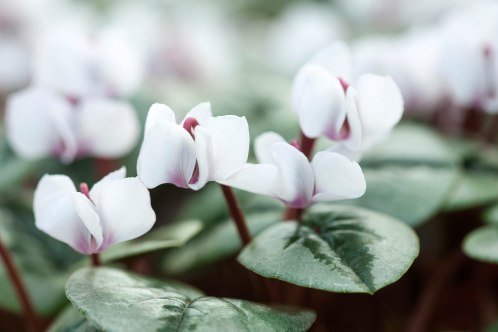 Thanks @ctrl-alt-nwo
Thanks @ctrl-alt-nwo
Have a great day
Facts about Cyclamens
Source
It is a beautiful and unpretentious flower. Tsiklamen. In natural conditions, you can find about 15 species of a similar flower. Most of them are in Europe, this is its central part and the Mediterranean. And only two species, Persian (Alpine violet) and European (purple) are grown in an apartment. You can distinguish these two types in size - the Persian is much larger. This plant does not require special care. The cyclamen like it when there is bright light around it, but direct sunlight hits are not desirable for him, it is better to hide the flower from them. In winter, a plant is recommended for such a plant where the air will only warm by 12 degrees, not higher and with good lighting. In summer, for favorable growth of the flower, room temperature is sufficient. Thank you for the interesting post.
Encouraging your cyclamen to rebloom
People usually discard their cyclamen plants when they are done flowering, because they require a rest period and special temperature conditions. However, you can try coaxing your plant to rebloom by following these recommendations.
Rest period
In late spring, after the plant has finished flowering, the leaves will start to turn yellow. Stop fertilizing and gradually space waterings farther apart, stopping completely once all the leaves are yellow. Do not remove any leaves that are still green; wait until they are thoroughly dry, because this is the time when the tuber stores up the energy it needs to rebloom. Then place the pot in a cool location, preferably one with not much light (for instance, a basement with a temperature of about 15°C). During this time, keep the tuber dry, but without allowing it to become desiccated and shrivelled.
New vegetative growth from the tuber
At the end of the rest period, toward late August, repot the tuber in a slightly larger pot. The potting soil must have good drainage. A good mixture is two parts tropical plant potting soil, one part peat moss and one part perlite. When placing the tuber in the new pot, leave the top one third to one half exposed to the air. Resume watering and fertilizing, increasing the frequency of waterings gradually as new leaves form. Place the pot in a moderately cool room (about 20°C during the day and a bit cooler at night) with plenty of light but no direct noonday sun. Cool nighttime temperatures and proper lighting are essential to flower bud formation. Once the foliage is fully developed and the plant is in bloom, cooler daytime and nighttime temperatures will extend the blooming period.
http://espacepourlavie.ca/en/encouraging-your-cyclamen-rebloom
The name cyclamen is gotten from the Greek word for loop or hover, as a result of the manner in which the blossom stems twist up to bring its round seedpods under the defensive front of the leaves when the petals.the are for the most part known as indoor plants yet some of them becomes out door.these merit noticing .in the event that we need a plant before we purchase we should check its aroma. The pinks, purples and whites are regularly the most fragrant, and the scarlets the least.there
merits possessing an aroma like plant before we get it to check its fragrance. The pinks, purples and whites are frequently the most fragrant, and the scarlets the minimum.
Cyclamen are enduring plants, and will go torpid in spring. A great many people simply hurl them by then, yet in the event that you're tolerant, they will return. After the blooms drop, the leaves will drop, as well. By then, it doesn't much make a difference where you store it, yet slice back watering to nothing. You can put it outside finished the mid year. The plant can't utilize water while it's torpid, yet getting to be 100% dry makes the dirt harder to work with later on. In the event that you have it outside, it will normally react to the falling temperature in harvest time and grow new development. That is the point at which you can bring it back inside, give it an intensive douse, and come back to typical care.
Cyclamen don't care for solidifying temperatures (don't give them a chance to fall beneath 50F/10C). To the extent watering goes, they don't care for much. Keep them clammy, yet not dribbling wet.
Having a scope of comparable hues (differentiate worked in), looks superior to superbly coordinated plants - great running down the center of a table and spread around window sills.
http://espacepourlavie.ca/en/encouraging-your-cyclamen-rebloom
Cyclamen Plant Care – Tips For Taking Care Of A Cyclamen
Taking care of a cyclamen properly is essential if you wish to keep your cyclamen plant lasting year after year. Their vibrant flowers and interesting leaves make this plant a popular houseplant and many owners ask, “How do I take care of a cyclamen plant?” Let’s look at how to take care of cyclamen plants both during and after blooming.
Basic Cyclamen Plant Care Cyclamen care starts with the correct temperature. In nature, cyclamens grow in cool, humid environments. If the temperature of your house is over 68 F. (20 C.) during the day and 50 F. (10 C.) at night, your cyclamen will start to die slowly. Temperatures that are too high will cause the plant to begin to yellow, and the flowers will fade rapidly.

Cyclamen that are sold as houseplants are tropical and cannot tolerate temperatures below 40 F. (4 C.). Hardy cyclamen, on the other hand, which are sold in garden nurseries for outside use, are typically hardy to USDA Zone 5, but check the plant’s label to see the specific hardiness of the hardy cyclamen variety you are buying.
The next essential part of taking care of a cyclamen is to make sure that it is properly watered. Cyclamen are sensitive to both over and under watering. Make sure the plant has excellent drainage with a potting medium that holds water well. Water your cyclamen plant only when the soil is dry to the touch, but do not leave the plant in this dry state so long that it shows visible signs of not being watered, such as droopy leaves and flowers. When you water the plant, water from below the leaves so that the water doesn’t touch the stems or leaves. Water on the stems and leaves can cause them to rot. Soak the soil thoroughly and let any excess water drain away.
https://www.panamseed.com/dispthumb.aspx?imgsize=Display&imageid=127609
https://www.gardeningknowhow.com/houseplants/cyclamen/cyclamen-care.htm
magoo-2 found a series of multi accounts of a same owner is following your articles to cheat your generous rewards.
magoo-2 found these accounts are suspicious & can be multi accounts of a single owner. Conclusion is based on last 30 days transactions:
@rik432 @ratul8940 @rahul72 @villani @Wilson @masud90 @purepinag @sumonsha @max1994
magoo-2
Check our latest multi comment spam update report
Cyclamen, both potted for the house and growing in the garden, add a welcome burst of colour.
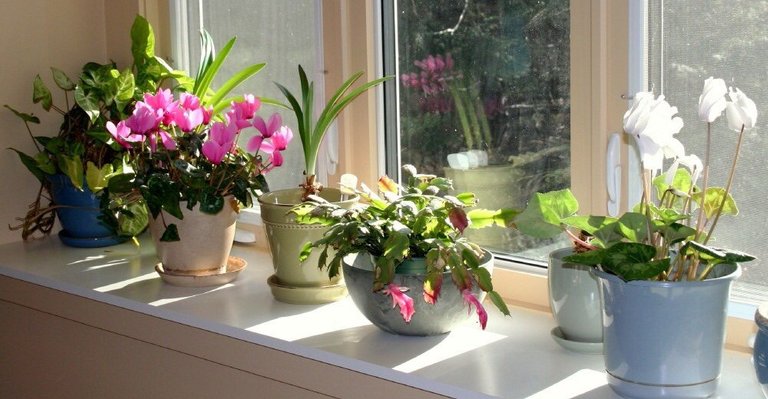
I think the small-flowered, indoor cyclamen are as pretty as anything you'll find in a pot at this time of year.
Naturally, the Cyclamen blooms from January till March when the air is colder, then rests during the warmer summer months.Cyclamen plants are a favorite for use as an indoor flowering houseplant, and it’s because of a number of things.One, the variety of bright-colored flowers are astounding – you can see multicolored ones, pure whites or in any shade of red.Today’s cyclamen persicum hybrids are the most sought-after variety of the Cyclamen tuber. There are also different sizes to choose from; the miniature cyclamen varieties come in a number of bright shades, and they can bloom as much as the bigger sized varieties!
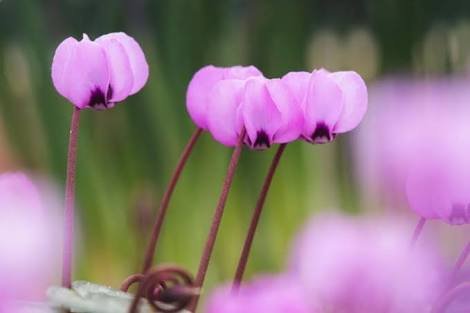.jpeg)
Light Requirement of Cyclamen:
Indoors, these does best with bright indirect to bright direct light. An Eastern exposure is ideal, a western window with a curtain works as long as the plant does not receive too much direct light.
very nice flower Cyclamen suitable for all ... spring now exists in indonesia means this flower is suitable in indonesia.
SOURCE
Beautiful flowers. I love how they look and smell. I reallt like wild cyclamens in forest as they are so gentle and pure.
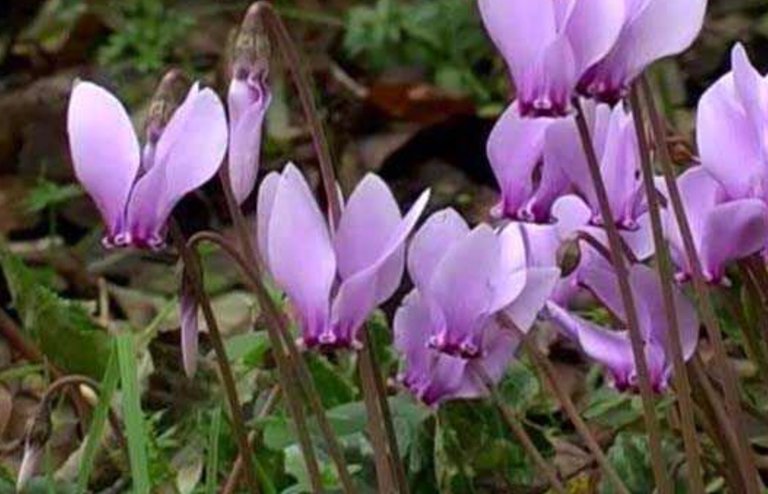
##Upvote/Resteem###
@ctrl-alt-nwo wow nice post wonderful garden disarming .great article & nice photography
This is really garden. that is great information and fantastic.
Resteem@ctrl-alt-nwo
So beautiful garden, thanks for sharing.really nice

Resteem
Cyclamen originate from the Mediterranean, from Spain to Iran. They are additionally found from upper east Africa to Somalia. They are lasting herbaceous aestivating plants, with a surface or underground tuber (got from the hypocotyl) 4-12 cm breadth, which produces leaves in pre-spring, and blossoms in the pre-winter; the leaves fade away amid the most sweltering piece of the Mediterranean summer dry spell to spare water. Each leaf or bloom develops without anyone else stem, which shoots up from the hypocotyl. The variegation is thought by a few botanists to be a type of characteristic troublesome disguise to decrease touching harm by creatures.
The hypocotyl develops leaves and blossoms on stems, it is possible that one bloom or one leaf for every stem. The stem for leaves and blossoms seems indistinguishable aside from in tallness. The leaves develop on stems of around 6 cm stature.
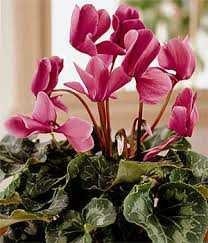
I hope you like it I love gardening I have a small garden insha'Allah I will post my own garden pictures..
Cyclamen is a plant that helped me cure a serious illness a few years ago. I bought a small pot with this flower in a flower shop and dug a flower bulb from earth. Just a few drops of juice mixed with water, I driped into the nose and the chronic sinusitis retreated before the force of this plant!
Did you know about these miraculous properties of the cyclamen?
Ha , no i did'nt know about that ! Very interesting.
And this year, I searched this flower everywhere in the shops of my city for my daughter to treat her, and you imagine: they are no longer selling it! I have not found it anywhere :(
Cyclamen persicum
Cyclamen persicum, the Persian cyclamen, is a species of flowering herbaceous perennial plant growing from a tuber, native to rocky hillsides, shrubland, and woodland up to 1,200 m (3,900 ft) above sea level, from south-central Turkey to Israel and Jordan. It also grows in Algeria and Tunisia and on the Greek islands of Rhodes, Karpathos, and Crete, where it may have been introduced by monks. Cultivars of this species are the commonly seen florist's cyclamen.
Description
Wild plants have heart-shaped leaves, up to 14 cm (6 in) usually green with lighter marbling on the upper surface.
Flowers bloom from winter to spring (var. persicum) or in autumn (var. autumnale) and have 5 small sepals and 5 upswept petals, usually white to pale pink with a band of deep pink to magenta at the base. After pollination, the flower stem curls downwards slightly as the pod develops, but does not coil as in other cyclamens. Plants go dormant in summer.
https://en.wikipedia.org/wiki/Cyclamen_persicum
Cyclamen persicum
Cyclamen persicum, the Persian cyclamen, is a species of flowering herbaceous perennial plant growing from a tuber, native to rocky hillsides, shrubland, and woodland up to 1,200 m (3,900 ft) above sea level, from south-central Turkey to Israel and Jordan. It also grows in Algeria and Tunisia and on the Greek islands of Rhodes, Karpathos, and Crete, where it may have been introduced by monks. Cultivars of this species are the commonly seen florist's cyclamen.
These flowers looks gorgeous with its white flower @ctrl-alt-nwo a good addition to the garden along with other flowers.
We have them too. As children we played a cyclamen fight gane when you put two together by heads and then pull with your oponent. The strongest wins.
They are so lovely, and they are commonly available here in Jan. And Feb. Far below freezing temps outdoors, and the furnace is running constantly. No wonder I can never keep them alive for long!. Good info and great photo!
Very beautiful photo. Good luck to you and Love.
I have not seen these flowers for a long time. Perhaps I did not look well. Very interesting. We need to look at them in the macro. Thank you @ctrl-alt-nwo !
Yes! I have seen these Cyclamen as plant pots in Bangkok. I thought they were very difficult to look after though I quite like those colourful flowers.
This information change my mind and I will be looking fir some pink ones for my garden. Thank you very much.
Bangkok is not ideal place for these, it's too hot and humid.
Thank you very much for your advice. But I did see these as pot plants being sold at our flea market from time to time. I also see them in some plant nurseries.
I will have to ask the vendors if they are the same species.
The sky in Sydney was very bright blue in winter! Like thatblue colour very much.
Cheers.
Oh they will probably do OK, but just not last as long as in cooler places. I have had them flowering for 5 months here, so i hope you can do the same too !
Nice....could you send some to me :)
Sure !
Thanks...they did smell lovely :)
Even as in bloom, preserve the basis ball wet and feed the plant every two weeks. Cyclamen should be saved moist by way of watering in a tray and allowing the roots to take up the water in preference to watering from above the plant which could result in rotting. Cast off yellow leaves and spent plant life.
Interesting post nice pic also ❤️
Beautiful flowers .first time heard that name ✌️